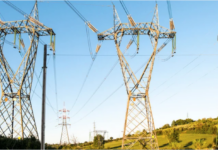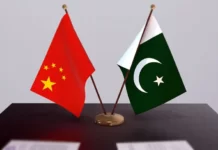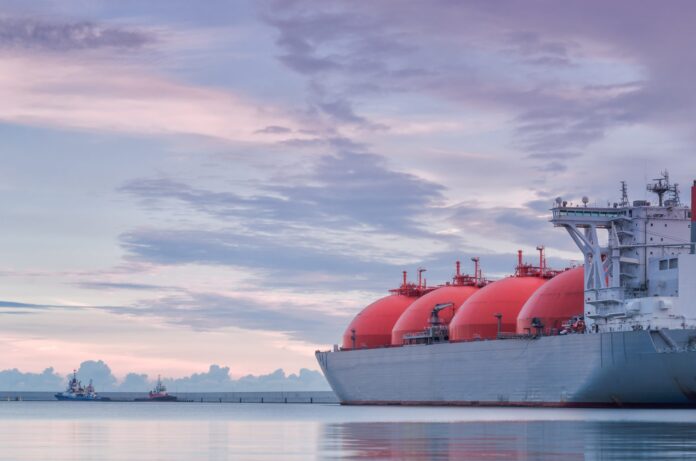Pakistan’s latest bid to acquire four Liquified Natural Gas (LNG) cargoes for the month of July, one each in the first and second weeks, and two in the last week yielded an alarming response from the market. No bids were received for the first two weeks and a single bid from Qatar Energy Trading was received for the last week at the highest ever rate of $39.80/mmbtu.
This grim response to the tender is the latest reminder of the hugely volatile global energy market at the moment and its potentially disastrous consequences for Pakistan which is already struggling with high inflation and energy shortfalls.
The country needs to take drastic and painful decisions to keep the economy above water. Pakistan has increased its dependence on LNG drastically over the last few years for its power generation in particular.
Natural gas combustion produces greenhouse gases, but it also produces much less CO2 and air pollution than many of the hydrocarbons it is replacing, notably coal. Compared to other fossil fuels, natural gas consumption increased significantly during the previous 10 years, making for approximately one-third of the expansion in global energy demand. Studies also show that its usage will continue to expand substantially in the upcoming years, followed by severe divergences.
Additionally gas is capable of responding both to seasonal and short-term demand fluctuations and to provide backup to the expanding use of variable renewables like wind and solar power. Because of its storage capacity, ability to be transported through pipelines or liquefied and sent by ship, and the ability of gas-fired power plants to turn on and off quickly, gas is key in helping the transition from fossil fuels to renewables.
The problem
However, the price of LNG has increased by more than 1,000% over the past two years, first due to demand after the epidemic and then because of Russia’s invasion of Ukraine.
The Russia-Ukraine war has had a staggering impact on global commodity markets. The primary source of income for the Russian war machine is its sale of fossil fuels, particularly oil and gas, of which Moscow is one of the leading producers. The main buyers of Russian oil and gas are European economies which are standing with Ukraine. To squeeze Russia’s revenue, Europe is slowly but surely weaning itself off of Russian supplies, and imposing sanctions at the same time to restrict other countries from approaching Moscow for their energy needs.
Since European countries are transitioning away from Russian gas, their reliance on LNG is on the rise. Previously piped gas was being shipped from Russia directly to Europe, now these countries are looking to import LNG shipments.
And that has a direct impact on Pakistan.
Pakistan buys from the spot market but also has multiple long-term contracts, including two with Qatar – one for six shipments in a month at a slope of 13.37% of Brent and the other one for two shipments each month at 10.2% of Brent.
The price of LNG in long-term contracts is determined by a fixed percentage (slope) of the average price of oil over a period of three months. In the spot market, prices are determined on a day to day basis and the lowest bidder is awarded the tender.
With rising oil prices and higher than ever spot rates, Pakistan is in a very tenuous situation. European customers are prioritised as the higher rates suppliers are able to get from customers in Europe is lucrative enough for companies to divert supplies and even in some cases default, as the penalty of defaulting can be compensated through higher rates coming in from EU nations.
This is especially alarming considering the fact that demand for energy is inelastic and, therefore, the supplier has leverage and can get the prices they want.
The massive increase in prices can be explained through the basic economic concept of supply and demand. Given the fact that the US and Europe are shunning Russian oil and gas, the supply side has contracted due to sanctions. If we were to draw a simplified demand and supply diagram, the supply curve would shift to the left leading to an increase in price. The following figure shows the concept as supply contracts and shifts to supply’ we can see the increased price determined by the market equilibrium.
What can Pakistan do?
The latest bid received by Pakistan from Qatar at an alarmingly high price can be viewed as a precursor to what we can expect further down the road.
Rising international energy prices are putting a strain on Pakistan’s coffers, even as the country’s foreign exchange reserves are fast declining. Even if somehow we’re able to finance our expensive LNG, the inflation following it would have a crippling effect on industries and consumers alike.
The energy division of the government has apparently also realised that importing increasingly expensive fossil fuels to generate electricity is not sustainable. They are putting forward the use of renewables, coal from Thar and Hydel power as the answer to our perpetual energy troubles. Like this has never happened before.
The government needs to take a combination of decisive decisions to address both the short-term and long-term issues in the sector. The gas supply will remain constrained, at least for the foreseeable future, and being proactive right now can help the government avoid shortages in the upcoming winter when demand peaks.
Coal from Thar, although not exactly an environmentally-friendly option, is perhaps one of the most affordable options the government can avail. As of now, the contribution from plants using Thar coal is a meagre 1,320MW, coming in from the Lucky Electric and Engro power plants.
There are another three projects under construction that will utilise Thar coal as fuel and contribute a further 1,980MW to the national grid. The Sino Sindh Resources plant with a capacity of 1,320MW, is expected to be commercially operational in August of this year, providing much needed respite to the national grid. The other two projects, with a capacity of 330MW each, are also expected to become operational during the course of this year.
The government also hopes to convert power plants currently using imported coal to local coal. Though this can prove to be an engineering and financial challenge, the option should be explored given the skyrocketing rates of coal in the international market along with the country’s financial situation.
Coal might just be the most practical solution the country has. All stakeholders recognise the environmental implications of using coal as fuel, but ensuring energy security trumps this concern. This week, plans were unveiled by Austria, Germany, Italy, and the Netherlands to restart decommissioned coal plants as their gas supplies deteriorate. The action was taken shortly after Moscow curtailed the flow of natural gas to many European countries.
Pakistan should also follow suit by prioritising the energy security of the country by increasing reliance on local coal supplies. It requires a long-term commitment on behalf of the government, and, at the same time, all measures should be taken to minimise the effects of harmful emissions. The global energy situation has been relentless, and it would be safe to assume this trend will remain going forward.
On a side note…
Europe’s attempt to curb the Russian onslaught hasn’t been very successful. Russian revenues from oil and gas have skyrocketed to unseen heights due to high prices of the commodities, and China, the second largest economy in the world, is now buying more from Russia than before.
China’s President Xi Jinping recently spoke about the West’s sanctions at the Brazil-Russia-India-China-South Africa (BRICS) business forum, saying: “To politicise the global economy and turn it into one’s tool or weapon, and wilfully impose sanctions …will only end up hurting one’s own interests as well as those of others, and inflict suffering on everyone.”
The chain reaction initiated by Russia’s actions in Ukraine is disrupting the entire global economy, which is now an extremely integrated ecosystem.
The war has increased the already intense strain on the natural gas markets and added uncertainty to the situation. The overall energy commodities market is becoming increasingly pricier due to the sanctions. Europe has been the centre of market tensions caused by a combination of a lower than average underground storage inventory, primarily from sites that are partially owned or controlled by Gazprom, a Russian subsidiary, and a significant decline in Russian pipeline supplies.


























I dеfinitely loved every little bit of it and I have you book marked too check .
온라인 카지노
j9korea.com
The government must make a sustained commitment, while also making every effort to lessen the negative consequences of hazardous emissions.